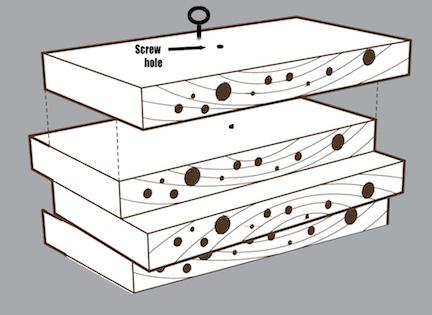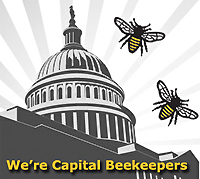Help with Third and Fourth Grade Pollinator Nest Building

Can you help us cut and drill lots of pieces of wood for a lesson next week?
We could use your help in making 200 3" x 4" x 1" wooden pieces for our Tuesday, September 20 and Friday, September 23 sessions on native pollinator nests. Any number of blocks, however small, would help!
The DC Beekeepers Alliance works with the Second, Third and Fourth Grades at Maury Elementary on a pilot Junior Beekeepers Program, and this Fall we will be doing 4 hands-on sessions with 9- and 10-year-olds. The Native Pollinator Nest Unit is for two Fourth Grade classes that have already completed 6 units of beekeeping/pollination education.
If we generate more than 200 drilled blocks, we have other schools interested in this exercise.
What are they for?
In this unit, we talk about the importance of native as well as managed pollinators, and compare their behavioral and physical adaptations (a critical theme in the STEM curriculum) and how they are reflected in the nests they make. We compare them to the hives of honey bees discussed earlier in the curriculum (which you can look at, too). Some children will also make tube nests from reeds.
We use untreated 4" x 1" lumber cut into approximately 3" x 4" rectangles, with several holes (from 1/4" to 1/2": different pollinators need different sizes) drilled into one side. We like at least 4 holes, or as many as six, and they do not have to be in a straight line (though we prefer a single size on each piece). Precision is not required, and size can vary from slightly less to slightly more than 3". Perfect right angles are not necessary, either!
The children will select pieces with different hole sizes and glue the nests together, then decorate them, screw in a hook, bring them home, and observe them next Spring to see if they are inhabited. This is a method of bringing science home and building long term interest in pollinators from kids and their families.
Getting materials
We can help provide lengths of lumber, but could really use help in cutting them down to blocks. In the past we have used scrap from pallets, as well as fragments picked up at home improvement stores.
If you are interested in helping or have questions, please email dcbees@dcbeekeepers.org.
Volunteers welcome
We can always use another hand in class when we do hands-on work, and please let us know if you are interested. Other dates and projects are listed below (even a single session is fine!)
| Date | Activity | Grade |
|---|---|---|
| 9/13/2016 (2:30-3:15 PM) |
Making Seed Balls/Pollinator Forage | Fourth |
| 9/16/2016 (2:30-3:15 PM) |
Making Seed Balls/Pollinator Forage | Fourth |
| 9/20/2016 (2:30-3:15 PM) |
Making Native Pollinator Nests | Fourth |
| 9/23/2016 (2:30-3:15 PM) |
Making Native Pollinator Nests | Fourth |
| 10/3/2016 (1:40-2:25 PM) |
Class: Why Are Pollinators Important?/Flower Anatomy | Third |
| 10/4/2016 (2:30-3:15 PM) |
Painting Hive Bodies with Bee Lessons/Messages | Fourth |
| 10/5/2016 (1:40-2:25 PM) |
Class: Why Are Pollinators Important?/Flower Anatomy | Third |
| 10/7/2016 (2:30-3:15 PM) |
Painting Hive Bodies with Bee Lessons/Messages | Fourth |
| 10/14/2016 (1:00-3:15 PM) |
Honey Harvest | Fourth (joint) |
| 10/17/2016 (1:40-2:25 PM) |
Class: Who Lives in a Bee Colony? | Third |
| 10/19/2016 (1:40-2:25 PM) |
Class: Who Lives in a Bee Colony? | Third |
| 10/24/2016 (1:40-2:25 PM) |
Class: What is a Beehive and What Does a Beekeeper Do? | Third |
| 10/26/2016 (1:40-2:25 PM) |
Class: What is a Beehive and What Does a Beekeeper Do? | Third |
| 11/7/2016 (1:40-2:25 PM) |
Class: Bees or Wasps or Hornets? | Third |
| 11/9/2016 (1:40-2:25 PM) |
Class: Bees or Wasps or Hornets? | Third |
| 11/14/2016 (1:40-2:25 PM) |
Class: Are Bees in Trouble? | Third |
| 11/16/2016 (1:40-2:25 PM) |
Class: Are Bees in Trouble? | Third |
| 11/21/2016 (1:40-2:25 PM) |
What are the Products of the Hive and Why Make Them? | Third |
| 11/23/2016 (1:40-2:25 PM) |
What are the Products of the Hive and Why Make Them? | Third |
